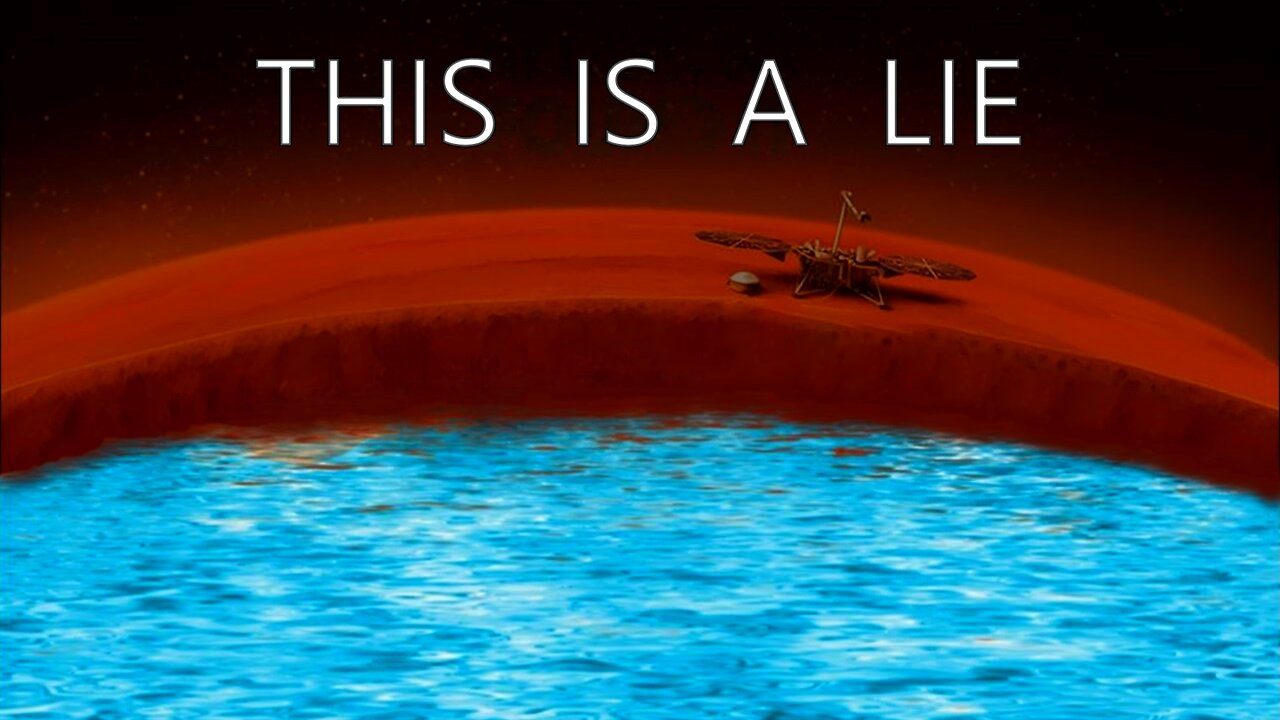Premium Only Content

🟠 The TRUTH about MARS Underground "Ocean" 🟠
Understanding Mars’ Underground Water Reservoir
Mars has long been a subject of fascination for scientists and the general public alike, particularly regarding the presence of water. Recent findings suggest that there is a significant amount of water located deep beneath the Martian surface, specifically in the mid-crust region. However, this underground reservoir is not an ocean in the traditional sense.
What is the Nature of Mars’ Underground Water?
The research indicates that this water exists within tiny cracks and pores in igneous rock at depths ranging from 6 to 12 miles (approximately 10 to 20 kilometers) below the surface. The volume of water estimated to be present could potentially cover Mars with an ocean at least one mile deep if it were brought to the surface. This suggests a substantial amount of liquid water trapped within the Martian crust, but it does not constitute an ocean as we understand it on Earth.
How Was This Water Discovered?
The evidence for this underground reservoir comes from data collected by NASA’s InSight lander, which operated from 2018 to 2022. By using a seismometer to detect marsquakes, scientists were able to analyze how seismic waves traveled through Mars’ crust. The speed and behavior of these waves provided insights into what materials exist beneath the surface. The findings indicated that there are extensive areas filled with liquid water-saturated sediments rather than large bodies of standing water like oceans.
Why Is It Not Considered an Ocean?
An ocean typically refers to a vast body of saltwater that covers significant portions of a planet’s surface. In contrast, the underground reservoir on Mars is characterized by its confinement within rock formations and fractures rather than being a free-flowing body of water. Moreover, conditions on Mars are vastly different from those on Earth; any liquid water present is under extreme pressure and temperature conditions that would not allow for typical oceanic environments.
Additionally, while there may be enough groundwater locked away in these mid-crust zones to fill ancient hypothesized oceans, it remains inaccessible due to its depth and geological context. Future missions aiming to explore or utilize this water would face significant challenges related to drilling technology and resource logistics.
Implications for Life on Mars
The existence of liquid water beneath the Martian surface raises intriguing questions about habitability. While no direct evidence has yet confirmed life existing in these subterranean environments, scientists posit that if life ever existed on Mars, it might have retreated into these deeper layers where conditions could still be favorable for microbial life.
In summary, while there is compelling evidence for substantial amounts of liquid water trapped deep within Mars’ crust—enough to theoretically cover its surface with an ocean-like layer—it is fundamentally different from what we consider an ocean on Earth due to its geological context and physical state.
What are the Mars leopard spots?
The “leopard spots” refer to intriguing millimeter-sized, irregularly shaped light patches found on a rock nicknamed “Cheyava Falls,” discovered by NASA’s Perseverance rover in July 2024. These spots are characterized by their light color surrounded by thin dark halos, resembling the pattern of a leopard’s coat. The rock was located in an ancient riverbed within the Jezero Crater on Mars, an area that scientists believe may have once supported microbial life due to its historical interaction with water.
Formation and Composition
The formation of these leopard spots is thought to be linked to chemical reactions involving hematite, a mineral that gives Mars its reddish hue. On Earth, similar spotting patterns can occur in sedimentary rocks when hematite undergoes chemical changes that alter the rock’s coloration from red to white. This process can also release iron and phosphate, which may contribute to the formation of the black halos surrounding the light patches. Such chemical reactions are known to provide energy sources for microbes in terrestrial environments, leading scientists to speculate about their potential significance regarding past life on Mars.
Scientific Significance
The discovery of these leopard spots is particularly exciting because they represent a combination of distinct features observed together for the first time on Mars:
Calcium sulfate veins indicating past water flow.
Organic compounds, which are essential building blocks for life.
100% of Rumble Views
AND CHANNEL REVENUE
Go To Private MOON Mission!
https://rumble.com/user/WhatsNextVids
Subscribe:
/ @thebetternasaproject
Patreon:
https://www.patreon.com/user?u=37594401
Buy Me A Coffee:
https://www.buymeacoffee.com/whats.next
Donate With Cash App:
https://cash.app/$YTpayments
X/Twitter:
https://x.com/WhatsNe75388303
-
 1:17:42
1:17:42
Glenn Greenwald
4 hours agoUS/Venezuela Escalations: Revisiting Key Developments and the Push for Regime Change | SYSTEM UPDATE SPECIAL
75K87 -
 LIVE
LIVE
ProvenTactics
1 hour agoFPS Shooter Games
28 watching -
 LIVE
LIVE
Phyxicx
1 hour agoHarvester - The Funniest, Most Deranged 90s Game Ever | 18+ | 10/9/2025
53 watching -
 LIVE
LIVE
LFA TV
21 hours agoLIVE & BREAKING NEWS! | THURSDAY 10/9/25
684 watching -
 LIVE
LIVE
megimu32
1 hour agoON THE SUBJECT: Sequels That Slapped! 🎬
80 watching -

tminnzy
2 hours agoThe Final Runn || !stakeus || !stake
34 -
 LIVE
LIVE
Wahzdee
5 hours agoBF6 Countdown Stream – What to Play Till Launch? Let’s Talk Battlefield
21 watching -
 LIVE
LIVE
StevieTLIVE
1 hour agoNew WZ Season Zombies Mode is BACK
15 watching -
 LIVE
LIVE
Total Horse Channel
11 hours ago2025 CMSA World/AQHA World of Mounted Shooting - Thursday
54 watching -
 43:48
43:48
MattMorseTV
2 hours ago $7.97 earned🔴Antifa's DARK MONEY just got EXPOSED.🔴
15.9K6